-
Logo created using synthetic chemistry
-
Idea inspired by chemist doodling then wondering if it was possible
-
Photographed' using hi-tech atomic tunneling microscopy
It's the smallest logo ever created - a single molecule 00,000 times thinner than a human hair, precision-crafted to resemble the five Olympic rings.
The molecule was purposely 'designed' by the Royal Society of Chemistry and IBM - and is called Olympicene.
It's an astonishing demonstration of how precisely synthetic chemistry can be controlled - made in a laboratory after a scientist doodled the logo and wondered if it could be created at the atomic scale.
The molecule was created after a scientist doodled the logo and wondered if it was possible to create the five rings in a chemical - and then photograph it
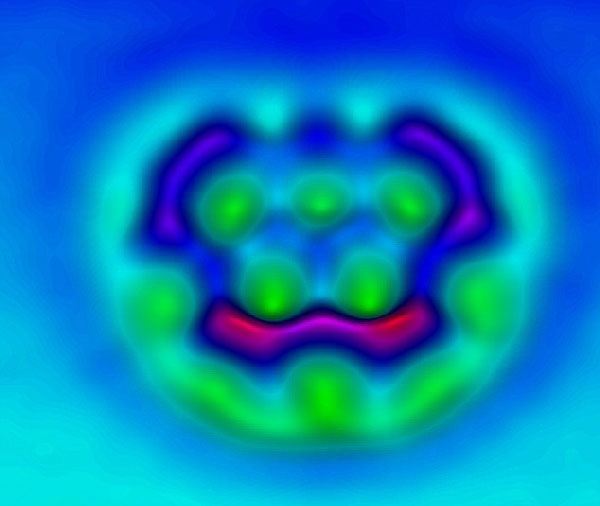
The molecule was created after a scientist doodled the logo and wondered if it was possible to create the five rings in a chemical - and then photograph it
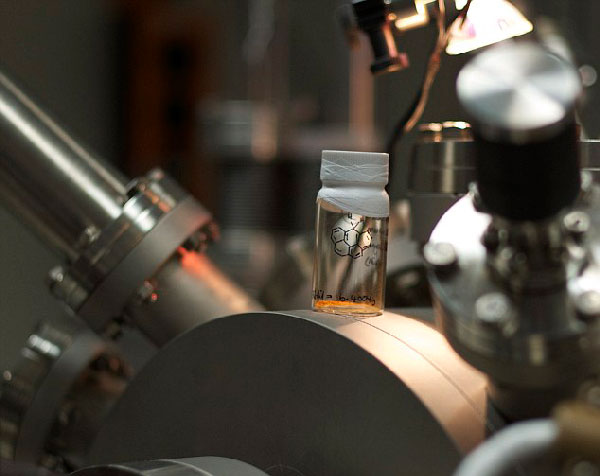 Called olympicene, they built the structure using synthetic organic chemistry, linking 'rings' of molecules to create an entirely new chemical
Called olympicene, they built the structure using synthetic organic chemistry, linking 'rings' of molecules to create an entirely new chemical
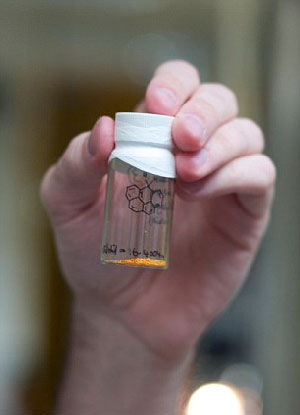 |
|
Chemists Dr David Fox and Anish Mistry, from the university, then used some clever synthetic organic chemistry - the modern molecule designer's toolbox - to build olympicene |
Chemists Dr David Fox and Anish Mistry, from the university, then used some clever synthetic organic chemistry - the modern molecule designer's toolbox - to build olympicene
Called olympicene, they built the structure using synthetic organic chemistry, linking 'rings' of molecules to create an entirely new chemical.
Even 'taking a picture' of the tiny object was a challenge - even a scanning electron microsope couldn't capture something that small.
Professor Graham Richards, of the Royal Society of Chemistry (RSC), said: ‘When doodling in a planning meeting, it occurred to me that a molecular structure with three hexagonal rings above two others would make for an interesting synthetic challenge.
‘I wondered: could someone actually make it, and produce an image of the actual molecule?’
Experts from the RSC, the University of Warwick and IBM Research - Zurich, decided to make and visualise olympicene, whose five-ringed structure was entered on a chemical database of over 26 million records.
Chemists Dr David Fox and Anish Mistry, from the university, then used some clever synthetic organic chemistry - the modern molecule designer's toolbox - to build olympicene.
Dr Fox said: ‘Alongside the scientific challenge involved in creating olympicene in a laboratory, there's some serious practical reasons for working with molecules like this.
‘The compound is related to single-layer graphite, also known as graphene, and is one of a number of related compounds which potentially have interesting electronic and optical properties.
‘These types of molecules may offer great potential for the next generation of solar cells and high-tech lighting sources such as LEDs.’
Even 'taking a picture' of the tiny object was a challenge - even a scanning electron microsope couldn't capture something that small
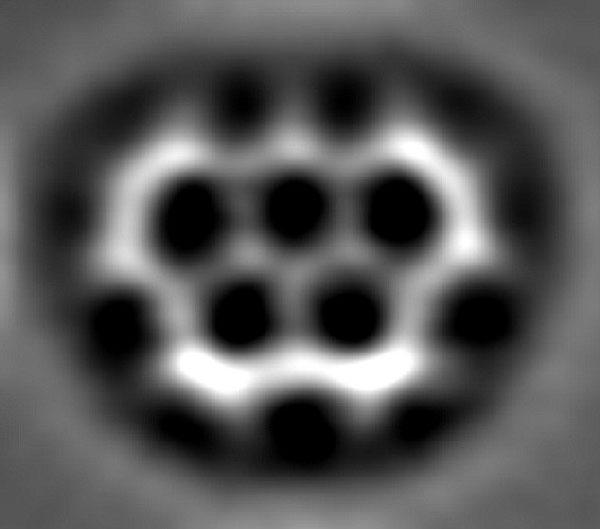 Even 'taking a picture' of the tiny object was a challenge - even a scanning electron microsope couldn't capture something that small
Even 'taking a picture' of the tiny object was a challenge - even a scanning electron microsope couldn't capture something that small
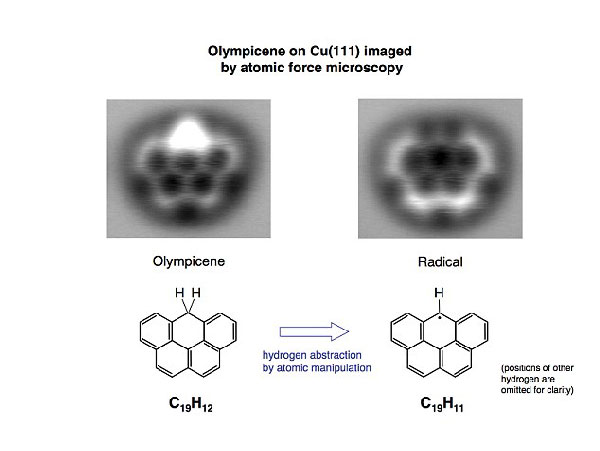 Even taking a picture of the molecule was difficult, using advanced microscopy techniques to capture 'Olympicene', which has now been registered as a new chemical
Even taking a picture of the molecule was difficult, using advanced microscopy techniques to capture 'Olympicene', which has now been registered as a new chemical
A first glimpse of the molecule's structure was obtained at Warwick Uni using scanning tunnelling microscopy. A higher resolution technique was however needed to unravel its atomic-level anatomy.
The chemical structure of olympicene was analysed with unprecedented resolution using a complex technique known as noncontact atomic force microscopy.
Using the technique, IBM scientists imaged a single olympicene molecule just 1.2 nanometres in width - about 100,000 times thinner than a human hair.
IBM scientist Dr. Leo Gross said: ‘The key to achieving atomic resolution was an atomically sharp and defined tip apex as well as the very high stability of the system.
‘We prepared our tip by deliberately picking up single atoms and molecules and showed that it is the foremost tip atom or molecule that governs the contrast and resolution of our AFM measurements.’
(Source : www.dailymail.co.uk)




